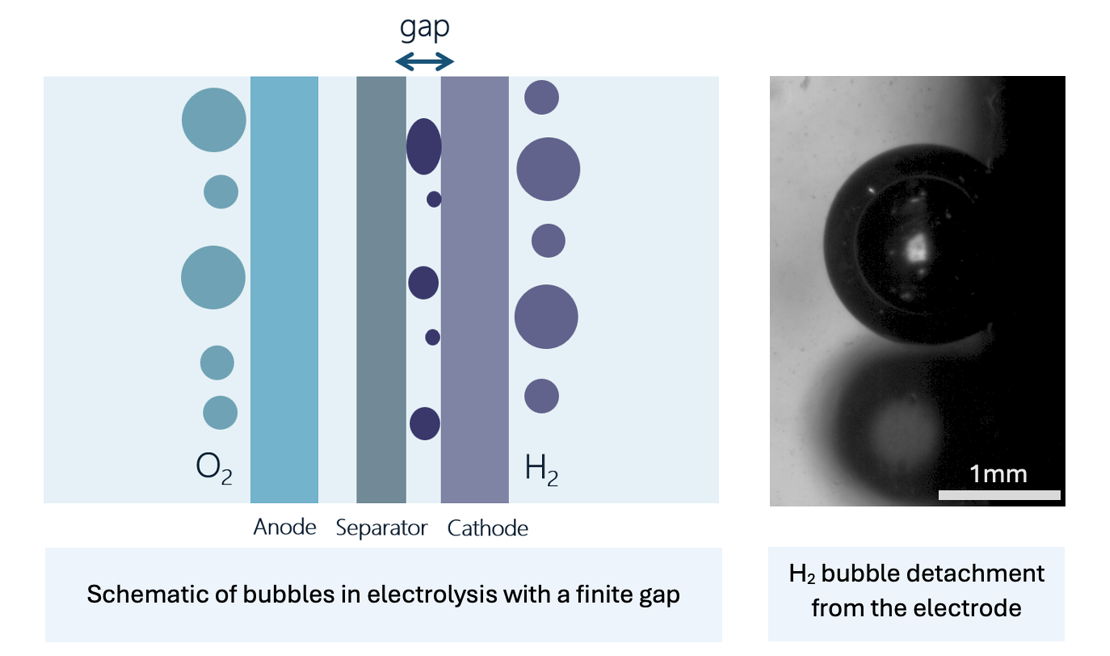Exploring Transport Limitations in Alkaline Electrolysis
- Persons involved: Fatemeh Hashemifar, Jeff Wood, Rob Lammertink
- Duration: 2024 – 2028
- Funding: NWO (Exploring transport limitations in zero-gap alkaline electrolysis | NWO)
Introduction
Hydrogen plays an important role in several industrial applications, such as fertilizer production. Current hydrogen production methods heavily depend on fossil fuels, indicating the urgent need for sustainable alternatives. Green hydrogen, produced through water electrolysis powered by renewable energy, presents a promising solution that must achieve cost and efficiency parity with traditional methods. A zero-gap alkaline water electrolyzer (AWE) minimizes cathode-anode distance, reducing ohmic resistance and increasing efficiency of electrolysis cell.
Keywords
Green hydrogen, Alkaline electrolysis, Zero-gap, Bubble dynamics, Marangoni effect
Technological Challenges
Bubbles can cover the electrode surface at higher densities, increasing overpotential and impacting electrolysis efficiency. Hence, it is crucial to systematically examine and describe the effect of bubbles on AWE efficiency. However, investigating bubble nucleation, growth, and transport mechanisms requires advanced electrochemical and observational techniques, as bubbles in finite gaps are challenging to study.
Research Goal
This project aims to explore hydrogen bubble formation dynamics in confined spaces, where microscale phenomena impact mass transport and electric fields. Effective bubble management is key to optimizing hydrogen output and reducing energy losses. 
1mm

